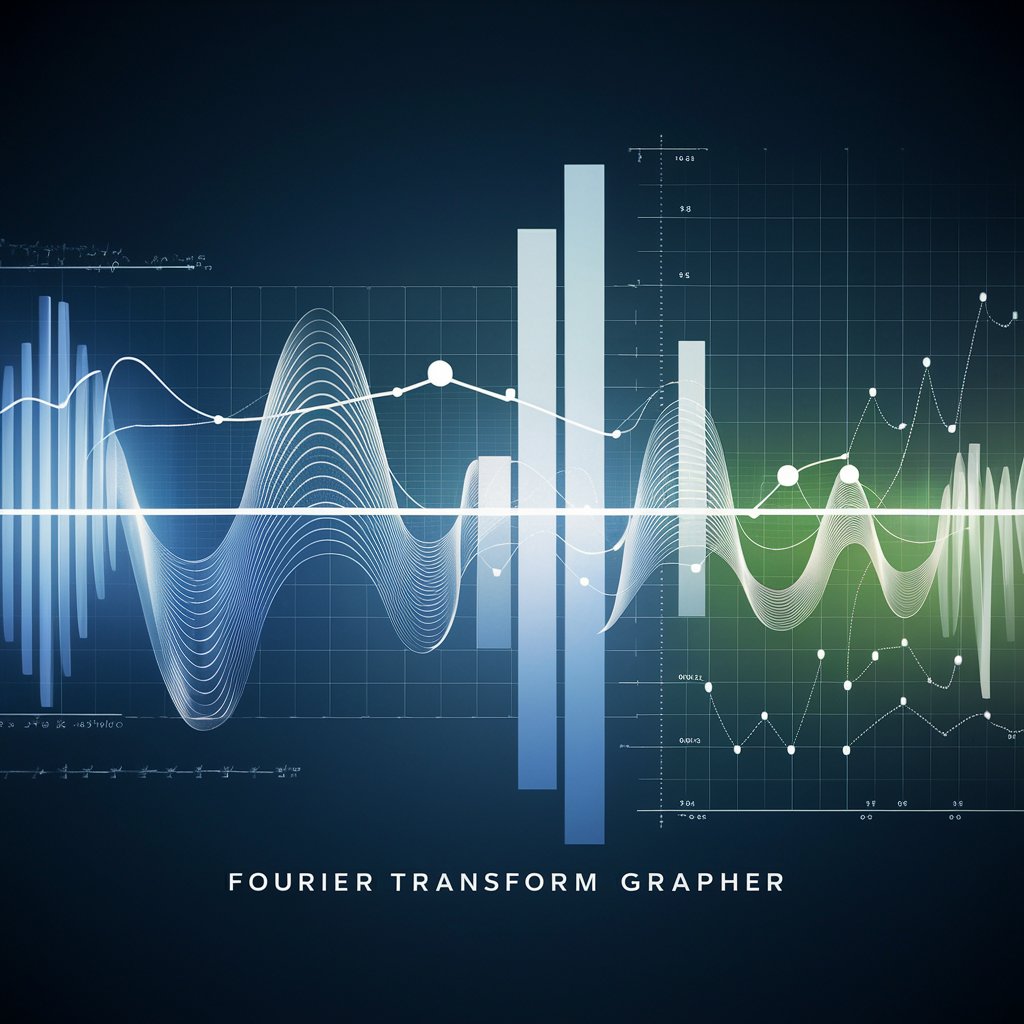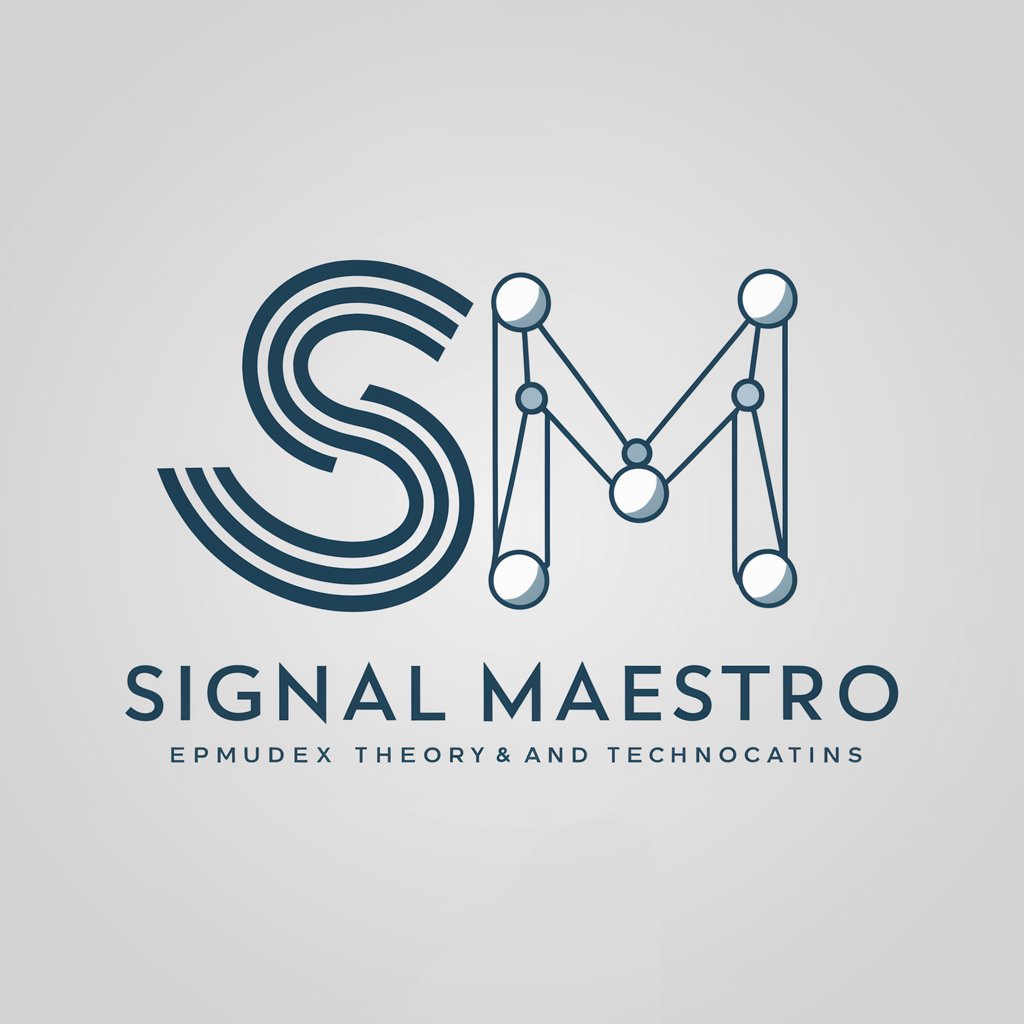
Fourier Transform Grapher - Fourier Transform Visualization

Welcome! Let's explore the fascinating world of Fourier transforms together.
Visualize Fourier Transforms Instantly
Explain the concept of Fourier transforms in simple terms.
How does convolution relate to Fourier transforms?
Show me a graph of the Fourier transform of a sine wave.
What are the applications of Fourier transforms in signal processing?
Get Embed Code
Overview of Fourier Transform Grapher
Fourier Transform Grapher is designed to assist in visualizing and understanding the Fourier transform, a mathematical operation that decomposes functions or signals into their constituent frequencies. The primary purpose of this tool is to provide clear, accurate visualizations of Fourier transforms and the convolution of various mathematical functions. This involves converting a time-domain signal into its frequency-domain representation. For example, when dealing with audio processing, Fourier Transform Grapher can demonstrate how different sound waves combine and interfere to form a complex audio signal. This is invaluable for tasks like noise reduction or sound engineering, where understanding the frequency components is essential. Powered by ChatGPT-4o。

Core Functions of Fourier Transform Grapher
Visualizing Fourier Transforms
Example
Generating a frequency spectrum from a time-domain signal, such as a musical note.
Scenario
In audio engineering, visualizing the Fourier transform of a sound helps in identifying and isolating specific frequencies for tasks like equalization or noise filtering.
Demonstrating Convolution
Example
Showing the convolution of a Gaussian function with a sine wave.
Scenario
In signal processing, understanding convolution helps in designing filters. For instance, blurring an image can be represented as convolving the image with a Gaussian blur kernel.
Comparative Analysis
Example
Comparing the Fourier transforms of a square wave and a triangular wave.
Scenario
In educational settings, students can explore how different waveforms affect their Fourier spectra, which is crucial for understanding wave properties in physics and engineering.
Target User Groups for Fourier Transform Grapher
Educators and Students
Teachers and students of subjects such as physics, engineering, and applied mathematics can use Fourier Transform Grapher to illustrate and explore complex concepts in Fourier analysis and signal processing.
Engineers and Scientists
Professionals in fields like electrical engineering, acoustics, and telecommunications, where signal analysis is fundamental, benefit from the ability to visualize and manipulate signals to better understand their characteristics and behaviors.
Hobbyists and Enthusiasts
Individuals with an interest in music production, amateur radio, or personal projects involving signal processing can use the Fourier Transform Grapher to enhance their understanding and capabilities in handling various signal types.

Using Fourier Transform Grapher
Step 1
Access the Fourier Transform Grapher by visiting yeschat.ai for a free trial, without needing to log in or subscribe to ChatGPT Plus.
Step 2
Choose your mathematical function or signal from the provided options to analyze its Fourier transform.
Step 3
Utilize customization features to modify parameters like amplitude, frequency, and phase to see how they affect the Fourier transform.
Step 4
Generate the graph to view both the time domain and frequency domain representations.
Step 5
Use the analysis tools to understand the properties of the function and explore different aspects of the Fourier transform.
Try other advanced and practical GPTs
Transform Your Blog Posts
Revamp Content with AI Power

Image Transform AI
Transform Images with AI Power

SQL Insights: Transform Your Website Analytics
Unlock Website Insights with AI

Transform and Rejuvenate Academy
Empower Your Career with AI-Driven Education

Ink Transform
Transform photos into ink wash masterpieces.

Easy To-Do Plan: Simplify & Transform Your Day
Organize effortlessly with AI precision.

BlackLight Transform
Illuminate your photos with AI

Brainstorm med Far-jokes
Innovating humor with AI and Danish wit.

Wine Advisor
Expert Wine Pairing at Your Fingertips

GCSE Religious Studies Tutor
Empower your religious studies with AI

Religious Ethical Dilemma Simulator
Explore Ethical Dilemmas with AI

Religious Text Explorer
Explore Faith, Understand Life

Frequently Asked Questions About Fourier Transform Grapher
What is the Fourier Transform Grapher primarily used for?
Fourier Transform Grapher is designed to help users visualize and understand the Fourier transforms of different mathematical functions or signals, demonstrating how functions in the time domain correspond to components in the frequency domain.
Can I use this tool to analyze non-periodic signals?
Yes, you can analyze both periodic and non-periodic signals. The grapher allows you to explore how non-periodic signals are represented as a continuous spectrum in the frequency domain.
Is there a way to save the graphs I generate?
Currently, the tool allows you to view and analyze graphs online; however, you can take screenshots for offline reference or use browser-based tools to save the images.
How does adjusting the parameters affect the Fourier transform?
Changing parameters like amplitude, frequency, and phase shifts the corresponding spectrum in the frequency domain, allowing you to study the impact of these variations on the signal's representation.
Does Fourier Transform Grapher support 3D graph visualizations?
While the current version focuses on 2D visualizations for clarity and ease of understanding, future updates may include 3D graph capabilities for more complex analyses.





